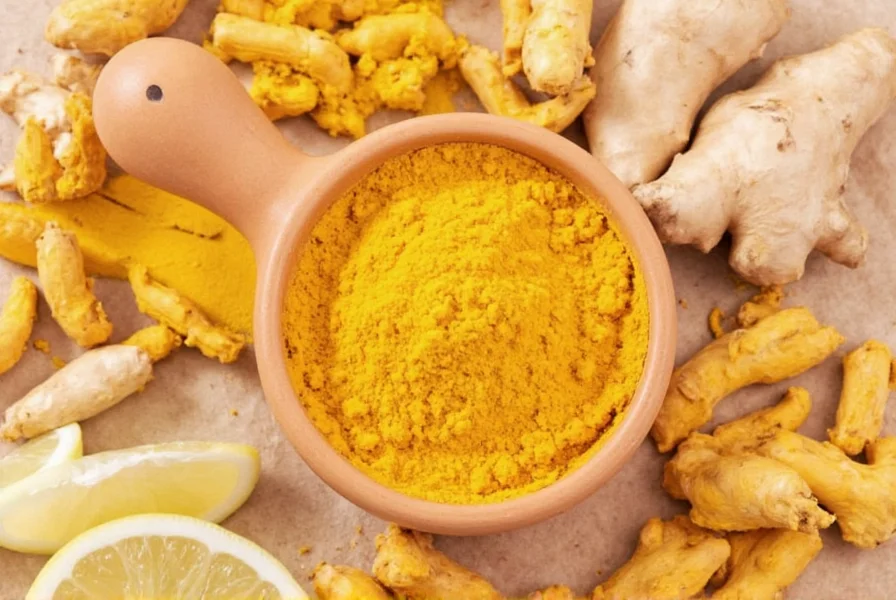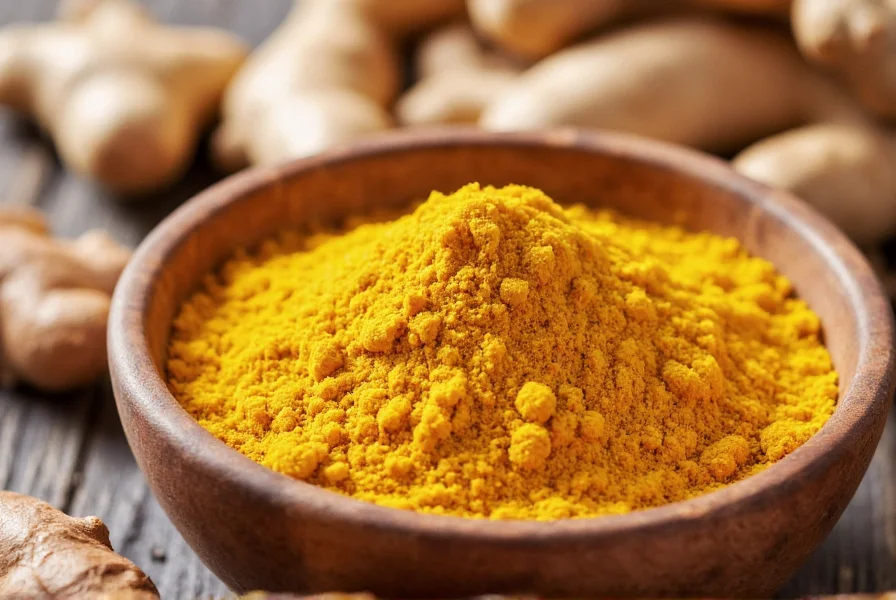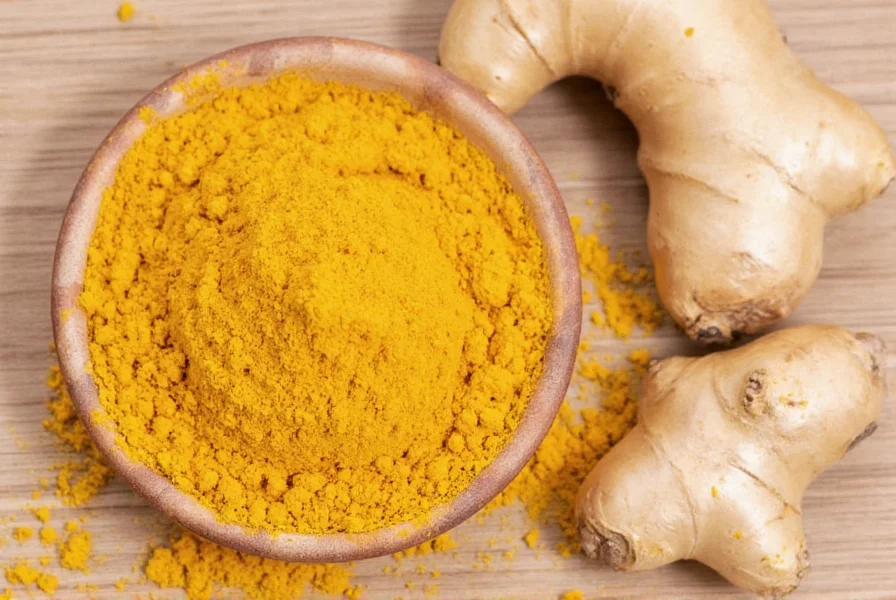These ancient spices have stood the test of time not just as culinary staples but as valuable components of traditional medicine systems worldwide. Modern research continues to validate many of their traditional uses while uncovering new potential applications for maintaining optimal health.
Understanding Turmeric's Therapeutic Potential
Turmeric's primary active compound, curcumin, represents just 2-8% of the spice by weight yet delivers remarkable biological effects. This polyphenol demonstrates exceptional anti-inflammatory capabilities by inhibiting multiple inflammation pathways simultaneously—a mechanism that differs from conventional anti-inflammatory medications.
Scientific evidence for turmeric anti-inflammatory properties continues to grow. A comprehensive 2022 review published in Nutrients analyzed 48 clinical trials and concluded that curcumin supplementation significantly reduced inflammatory markers like C-reactive protein in study participants. For those seeking natural approaches to joint pain management, research suggests taking 500-1,000 mg of curcumin twice daily may provide measurable relief within 8-12 weeks.
However, curcumin's notoriously poor bioavailability presents a challenge. The compound has limited absorption and rapid metabolism, which is why traditional preparations often combine turmeric with black pepper (containing piperine) or healthy fats. Modern supplement formulations address this through phospholipid complexes or nanoparticle technologies that can increase absorption by up to 185-fold compared to standard curcumin.

Ginger's Proven Health Applications
Ginger's therapeutic power comes primarily from gingerols and shogaols, compounds responsible for its characteristic pungency. These bioactive components demonstrate impressive versatility in addressing multiple health concerns, particularly those related to the digestive system.
When considering how much ginger to take for nausea relief, research provides clear guidance. A meta-analysis in Obstetrics & Gynecology found that just 1-1.5 grams of ginger daily significantly reduced pregnancy-related nausea. For postoperative nausea, studies show 1 gram taken before surgery produces measurable benefits. The mechanism involves ginger's ability to accelerate gastric emptying and modulate serotonin receptors in the digestive tract.
Beyond digestive health, ginger shows promise in managing muscle pain and soreness. Research published in the Journal of Pain demonstrated that daily consumption of 2 grams of raw ginger reduced exercise-induced muscle pain by approximately 25%. The anti-inflammatory effects appear to build over time, with maximum benefits observed after 5-6 days of consistent use.
Comparative Analysis: Turmeric vs. Ginger
While both spices share anti-inflammatory properties, they work through different biological pathways and offer distinct therapeutic advantages:
| Property | Turmeric (Curcumin) | Ginger (Gingerols) |
|---|---|---|
| Primary Health Focus | Chronic inflammation, joint health, cognitive function | Digestive health, acute nausea, muscle pain |
| Time to Noticeable Effects | 4-12 weeks of consistent use | Hours to days for digestive benefits |
| Optimal Daily Dosage | 500-2,000 mg curcumin (with enhancers) | 1-2 grams raw ginger or equivalent |
| Key Bioavailability Strategy | Combine with piperine or lipids | Consumed raw or minimally processed |
Their complementary mechanisms create potential synergistic effects. Research on turmeric ginger tea benefits suggests the combination may enhance antioxidant protection beyond what either spice provides individually. A 2023 study in Food Science & Nutrition found that consuming both spices together increased total antioxidant capacity in participants' blood by 37% compared to either spice alone.
Practical Integration into Daily Life
Incorporating these spices effectively requires understanding their optimal preparation methods:
- Turmeric: Add to warm dishes with black pepper and healthy fats (like olive oil or coconut milk) to maximize absorption. Golden milk—a traditional Ayurvedic beverage—combines these elements effectively.
- Ginger: Use fresh ginger in juices, smoothies, or teas for maximum gingerol content. Grating releases more active compounds than slicing.
- Combined approach: Create a morning tonic with fresh ginger juice, a pinch of turmeric, lemon, and honey in warm water—a practice supported by traditional medicine systems for digestive health.
For those exploring natural remedies for digestive health, the combination works particularly well. Ginger stimulates digestive enzymes while turmeric's anti-inflammatory properties may help soothe irritated intestinal lining. This dual action explains why many traditional healing systems prescribe these spices together for gastrointestinal complaints.
Evidence-Based Considerations
While both spices show promise, it's crucial to maintain realistic expectations about their capabilities. Neither turmeric nor ginger represents a cure-all, and their effects are generally modest compared to pharmaceutical interventions. The strongest evidence supports their use for:
- Mild to moderate osteoarthritis symptoms
- Nausea management (particularly pregnancy-related and chemotherapy-induced)
- Post-exercise muscle soreness
- Supporting overall antioxidant status
Potential side effects of daily turmeric consumption include gastrointestinal discomfort at high doses and possible interactions with blood thinners. Ginger may cause mild heartburn in some individuals and could theoretically interact with anticoagulant medications, though clinical evidence of significant interactions remains limited.
Quality considerations significantly impact effectiveness. For turmeric supplements, look for products specifying curcumin content and including bioavailability enhancers. With ginger, fresh root generally provides more active compounds than dried powder, though both forms offer benefits.
Conclusion: Balanced Perspective on Natural Health
Turmeric and ginger represent valuable components of a holistic approach to health maintenance. Their scientifically supported benefits for inflammation management, digestive health, and antioxidant protection make them worthy additions to most diets. However, they work best as part of a comprehensive wellness strategy that includes balanced nutrition, regular exercise, and appropriate medical care when needed.
The best time to take turmeric supplements appears to be with meals containing healthy fats, while ginger shows greatest effectiveness when consumed before potential nausea triggers or as part of regular digestive support routines. By understanding their distinct properties and complementary effects, individuals can make informed decisions about incorporating these powerful spices into their health regimens.

Frequently Asked Questions
Can turmeric and ginger be taken together safely?
Yes, turmeric and ginger can generally be taken together safely and may provide complementary benefits. Many traditional medicine systems combine these spices specifically for their synergistic effects on digestion and inflammation. However, individuals taking blood-thinning medications should consult their healthcare provider first, as both spices have mild anticoagulant properties. The typical culinary amounts used in cooking pose minimal risk, but high-dose supplementation of both simultaneously warrants professional guidance.
How long does it take to experience benefits from turmeric?
The timeframe for experiencing turmeric benefits varies by application. For inflammation-related conditions like joint pain, most clinical studies show measurable improvements after 4-12 weeks of consistent daily use at appropriate doses (typically 500-1,500 mg of enhanced curcumin). Digestive benefits may appear more quickly—within days to a couple of weeks. It's important to note that standard turmeric powder has limited bioavailability, so benefits may be more pronounced when using formulations designed to enhance absorption or when consumed with black pepper and healthy fats.
Does cooking affect the health benefits of ginger?
Cooking does affect ginger's bioactive compounds, but not necessarily in a negative way. Raw ginger contains higher levels of gingerols, which provide the characteristic pungency and many health benefits. When heated, gingerols transform into shogaols, which are more potent antioxidants with different therapeutic properties. While some studies suggest raw ginger may be slightly more effective for nausea relief, cooked ginger still retains significant health benefits and may offer enhanced anti-inflammatory effects. For maximum versatility, consider using both raw and cooked forms depending on your specific health goals.
Are there any contraindications for long-term turmeric use?
Long-term turmeric use at culinary doses (up to 3 grams daily of turmeric powder) is generally considered safe for most people. However, high-dose supplementation (particularly isolated curcumin exceeding 8 grams daily) has been associated with potential gastrointestinal issues in some studies. Individuals with gallbladder problems should exercise caution as turmeric may stimulate bile production. Those taking medications metabolized by the liver's cytochrome P450 system should consult a healthcare provider, as curcumin may affect how these medications are processed. As with any supplement, periodic breaks from high-dose use are prudent, though culinary use can continue indefinitely for most individuals.











 浙公网安备
33010002000092号
浙公网安备
33010002000092号 浙B2-20120091-4
浙B2-20120091-4